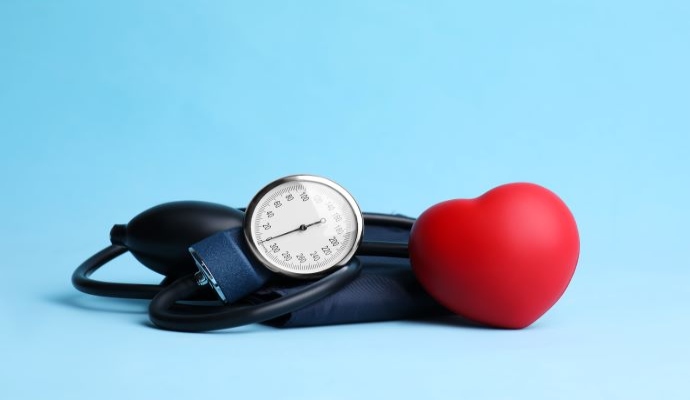Digital Health Strategies Reduce High BP Among Underserved Groups
Research shows digital health interventions positively impacted hypertension control among vulnerable patients, including low-income and minority race groups.

Source: Getty Images
- Digital health interventions drove improvements in blood pressure (BP) among hypertension patients experiencing health disparities, according to new research.
Published in JAMA Network Open, the study examined the impact of digital health interventions on changes in BP among vulnerable populations with hypertension. According to the Centers for Disease Control and Prevention (CDC), half of United States adults (119.9 million) have hypertension. Of these, only 27 million have their hypertension under control.
Further, there are widespread disparities in hypertension management across sociodemographic groups. For example, research shows that hypertension control rates among White adults are significantly higher than among Black, Asian, and Hispanic adults, and socioeconomic status, especially wealth, is a strong independent predictor of hypertension in older adults.
Thus, researchers from Yale New Haven Health, Yale University, New York Medical College, Massachusetts General Hospital, and the VA Connecticut Healthcare System set out to assess whether digital health interventions could reduce BP levels in populations facing health disparities.
They conducted a literature search within the Cochrane Library, Ovid Embase, Google Scholar, Ovid MEDLINE, PubMed, Scopus, and Web of Science Core Collection databases to identify studies published from database inception to October 30, 2023. They included 28 randomized clinical trials or cohort studies, representing 8,257 participants with a mean age of 57.4 years.
All studies incorporated multiple digital health interventions, including electronic health reminders, education, and behavioral support programs. Thirteen studies included interventions like integrating community health workers or skilled nurses, four included wearable or ingestible sensors, and 21 included tailored messaging or reminders based on cultural, linguistic, behavioral, and psychosocial factors.
Of the 8,257 individuals across the 28 studies, 3,828 (46.4 percent) were assigned to an intervention group, and 4,429 (53.6 percent) were assigned to a control group that received standard care.
Further, 19.8 were Hispanic, 42.8 percent were Black, and 31.6 percent were White. About 17.8 percent had a low level of completed education, 22.8 percent were classified as having low income, and 14.3 percent were covered by Medicaid.
Across all studies, the mean systolic BP at baseline was 138.6 (16.3) mm Hg and 139.2 (16.2) mm Hg for the digital health intervention and control groups, respectively. By the final follow-up, the mean systolic BP was 131.8 (15.9) mm Hg in the intervention groups versus 135.3 (16.5) mm Hg in the control groups.
The mean diastolic BP at baseline was 81.4 (11.8) mm Hg for the digital health intervention groups and 81.7 (11.7) mm Hg for the control groups. The mean diastolic BP at the final follow-up was 77.8 (10.5) mm Hg in the intervention groups and 79.6 (11.2) mm Hg in the control groups.
“This study found evidence of BP improvements in populations experiencing health disparities, strengthening the case for digital health as an efficient and effective tool for hypertension management in these groups,” researchers wrote.
They also stated that personalized digital health approaches may help to eliminate health inequities in hypertension management and outcomes.
Though various studies affirm digital health and virtual care approaches have a positive impact on hypertension management, a recent study revealed that some interventions may drive up costs.
For the study, researchers examined data for 192 practices where 25 percent or more hypertension patients received remote patient monitoring (RPM) and 942 where less than 2.5 percent of hypertension patients received RPM.
They found that hypertension patients at high-RPM practices experienced a 3.3 percent relative increase in hypertension medication fills from 2019 to 2021, compared with patients at matched low-RPM practices during the same period. Additionally, high-RPM practice patients experienced reductions in the number of hypertension-related emergency department visits and hospitalizations.
However, high-RPM practices’ net hypertension-related spending saw a relative increase of $274 per patient.
